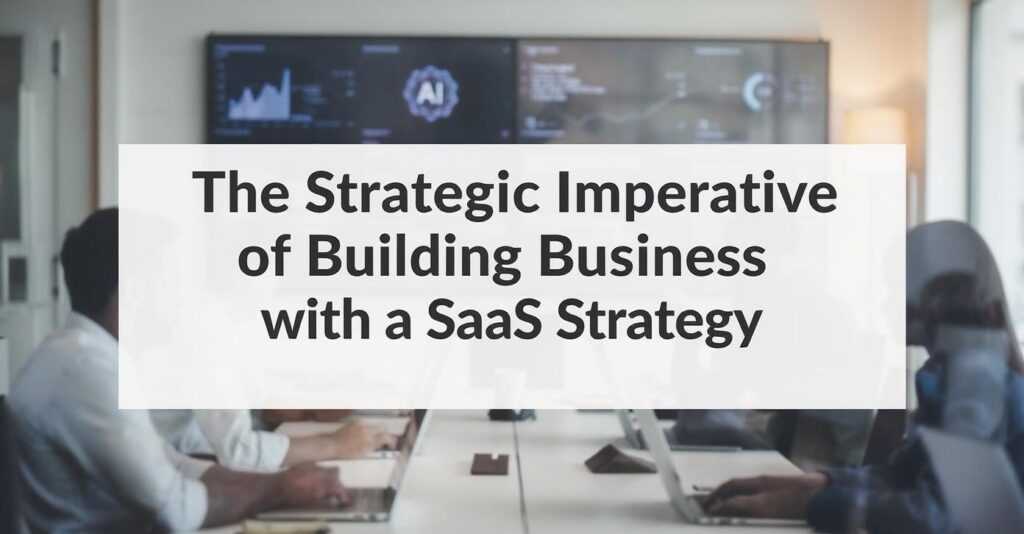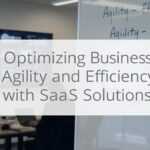In today’s rapidly evolving digital economy, the Software-as-a-Service (SaaS) model is reshaping the way businesses operate, innovate, and scale. From startups to multinational enterprises, companies are increasingly relying on SaaS solutions to drive growth, streamline operations, and stay ahead of the curve. Building Business with a SaaS strategy has become more than just a technology investment — it’s a core component of digital transformation and long-term success.
As enterprises face rising customer expectations, growing competition, and constant technological disruption, SaaS presents an agile, cost-effective, and scalable pathway to transformation. At Bizinfopro, we understand how a robust SaaS strategy can unlock new business models, enable rapid deployment of services, and deliver real-time insights that fuel innovation.
Understanding the Power of SaaS in Modern Business
The SaaS model delivers software over the cloud, enabling users to access applications via web browsers without installing or maintaining hardware or software infrastructure. The advantages are compelling: lower upfront costs, faster deployment, seamless updates, and accessibility from anywhere.
For organizations, building business with a SaaS strategy means aligning business objectives with technology solutions that are flexible, data-driven, and user-centric. SaaS supports innovation by offering a modular, subscription-based model where businesses can scale up or down as needed, minimizing risk while maximizing value.
Key Drivers of SaaS Strategy Adoption
Several strategic drivers are fueling the widespread adoption of SaaS across industries:
1. Operational Efficiency:
SaaS platforms automate routine tasks, reduce manual errors, and provide centralized dashboards for better management. Businesses benefit from enhanced productivity and reduced operational overhead.
2. Cost Optimization:
Unlike traditional software that requires hefty investments in infrastructure, SaaS solutions operate on a pay-as-you-go basis. This allows businesses to optimize their IT budgets and redirect resources toward innovation.
3. Speed to Market:
SaaS accelerates deployment timelines. Companies can go live with new services in days or weeks, not months. This rapid delivery enables businesses to adapt quickly to market changes.
4. Enhanced Collaboration:
SaaS tools support real-time collaboration across teams and geographies. They facilitate communication, streamline project workflows, and ensure data consistency across departments.
5. Continuous Innovation:
SaaS providers roll out automatic updates, delivering new features and security patches without disruption. This ensures that businesses are always equipped with the latest capabilities.
Crafting a Scalable SaaS Strategy
Developing a successful SaaS strategy involves more than selecting a vendor. It requires a clear vision, defined goals, and a deep understanding of business processes. Here are key steps to build a sustainable SaaS-driven model:
Define Strategic Objectives:
Before adopting SaaS, identify what the business hopes to achieve—whether it’s improving customer engagement, increasing efficiency, entering new markets, or launching digital products.
Evaluate the Ecosystem:
Assess existing tools and platforms for integration readiness. SaaS success depends on interoperability across systems such as CRM, ERP, finance, and HR.
Choose the Right Partners:
Vendors should be selected based on scalability, data security, compliance, and customization capabilities. Look for providers with proven experience and industry alignment.
Focus on User Experience:
Ease of use is critical to user adoption. SaaS applications should offer intuitive interfaces, mobile compatibility, and seamless onboarding.
Plan for Data Management:
Data is at the heart of SaaS. Organizations must establish protocols for data migration, privacy, analytics, and governance to ensure trust and compliance.
Monitor and Optimize:
Track performance KPIs regularly. Use SaaS analytics dashboards to gain insights into usage, system health, and business outcomes. Continuous optimization is essential.
Industry Use Cases: SaaS at Work
The application of building business with a SaaS strategy spans every industry. Below are a few impactful examples:
Retail & E-commerce:
Retailers use SaaS platforms to manage inventory, personalize customer experiences, and optimize supply chain logistics. SaaS-based e-commerce engines help businesses launch online stores swiftly and scale during peak seasons.
Healthcare:
In healthcare, SaaS supports electronic medical records (EMRs), appointment scheduling, telehealth services, and compliance reporting. It ensures secure access to patient data while maintaining HIPAA and GDPR compliance.
Manufacturing:
SaaS drives digital manufacturing through tools for predictive maintenance, quality assurance, and resource planning. Cloud-based MES (Manufacturing Execution Systems) improve productivity and reduce downtime.
Finance:
Financial firms use SaaS for real-time analytics, automated compliance, fraud detection, and client management. Fintech SaaS solutions deliver agility and transparency in a heavily regulated environment.
Education:
EdTech platforms powered by SaaS offer online learning environments, testing tools, and student performance tracking. They make education accessible and interactive for remote learners.
Overcoming Challenges in SaaS Transformation
Despite its benefits, SaaS adoption can present challenges that need strategic planning and leadership buy-in.
Data Security & Privacy:
With SaaS solutions hosted in the cloud, businesses must ensure strict compliance with cybersecurity standards and local regulations.
Vendor Lock-in:
Dependence on a single provider can limit flexibility. Mitigate this by choosing providers that support open APIs, integration flexibility, and clear SLAs.
Change Management:
Employees may resist new tools. A comprehensive change management strategy, including training and support, is crucial for user adoption.
Performance Reliability:
SaaS platforms must offer high uptime, low latency, and responsive customer support. SLAs should guarantee service levels that align with business needs.
SaaS and the Future of Business Innovation
As businesses shift from ownership to access, SaaS is fueling a subscription-based economy that prioritizes experience over assets. From product-as-a-service to platform-based models, building business with a SaaS strategy enables companies to deliver value continuously.
Emerging technologies such as AI, machine learning, IoT, and blockchain are increasingly being integrated into SaaS platforms, driving intelligence and automation. AI-powered SaaS solutions are now capable of real-time decision-making, smart recommendations, and predictive analytics that personalize customer journeys.
SaaS also empowers businesses to tap into global markets. With multilingual support, scalable infrastructure, and cloud-native architecture, companies can serve diverse customers without significant geographic constraints.
Moreover, SaaS fosters ecosystem-driven growth. Through integrations, APIs, and marketplaces, organizations can extend the value of SaaS tools and build partnerships that drive innovation and customer retention.
The Bizinfopro Advantage
At Bizinfopro, we help organizations reimagine their digital strategies through purpose-built SaaS solutions. Our focus on scalability, agility, and business alignment ensures our clients stay competitive and future-ready. Whether it’s enhancing operational workflows or launching new digital services, building business with a SaaS strategy becomes seamless with our tailored approach and expert partnerships.
Read Full Article : https://bizinfopro.com/whitepapers/it-whitepaper/building-business-with-a-saas-strategy/
About Us : BizInfoPro is a modern business publication designed to inform, inspire, and empower decision-makers, entrepreneurs, and forward-thinking professionals. With a focus on practical insights and in‑depth analysis, it explores the evolving landscape of global business—covering emerging markets, industry innovations, strategic growth opportunities, and actionable content that supports smarter decision‑making.



